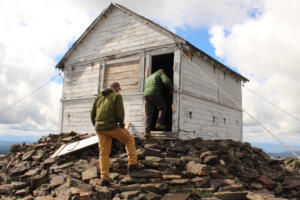Like many citizens of Clark County, I have become increasingly alarmed over the proposed unrestrained growth that is taking place in East Clark County.
We see a pro-growth planning process that is leading parts of our county into an environmental future we may not recognize or desire to live in. This kind of massive growth places unnecessary burdens on the people who already live here.
We hear words from our policy makers like, “oh that will be mitigated, or that infrastructure project is on a list of priorities in the future, or there is no money for proper enforcement of violations by developers.”
It isn’t that most people don’t approve of economic development and growth, but growth must be coordinated and often preceded with necessary improvements in infrastructure, so that during the construction phase of building, people’s lives are not upended with unnecessary traffic jams created by this massive growth.
Even infrastructure projects create dislocations, traffic delays etc., but the thought of updating infrastructure, “as needed,” combined with massive subdivision building, is simply a recipe for a construction nightmare that belies poor planning.

